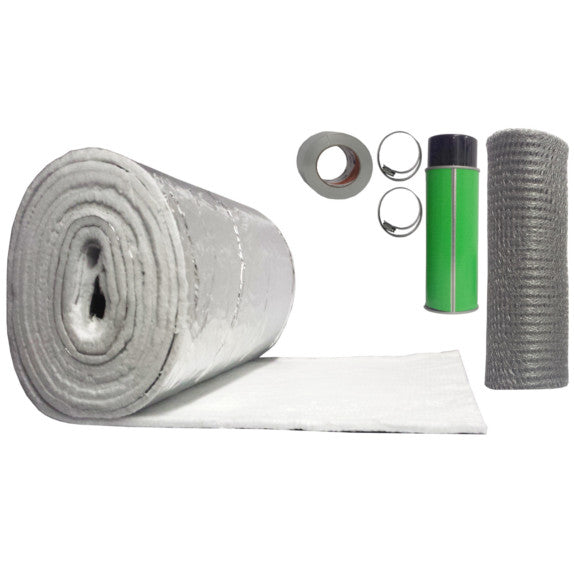Hello all
This is my 2nd season with my VF and i have to clean my chimney at least 2 times a season. Pleaae see the pictures and maybe someone will see something wrong with it. I have spoken with the manufacturer and they suggested i leave a windowncra ked open in my basement but that did not help. I relined my chimney with a 6" stainless steel liner and dont have a chimney cap on it. I also check my wood and it is in the moisture specs usually on the low end.
Also if you look at the back of the stove picture there is a black tar type substance that comes out of the chimney pipe right from the stove. The video i watched said this is normal the 1st fire but it has happened numerous times.
Thanks for ant help!
Andy
![[Hearth.com] Kuuma Vapor Fire Creosote [Hearth.com] Kuuma Vapor Fire Creosote](https://www.hearth.com/talk/data/attachments/320/320167-309ecf1f61eedb764fb852cb5bcf7a79.jpg?hash=CMc5asqO-H)
![[Hearth.com] Kuuma Vapor Fire Creosote [Hearth.com] Kuuma Vapor Fire Creosote](https://www.hearth.com/talk/data/attachments/320/320168-887b336020bf09c4b5659b69d2336079.jpg?hash=-QqNoqDL4H)
![[Hearth.com] Kuuma Vapor Fire Creosote [Hearth.com] Kuuma Vapor Fire Creosote](https://www.hearth.com/talk/data/attachments/320/320169-e1bbdcb042dfe2e1df269916e71de84c.jpg?hash=4Y4HJJPFSc)
![[Hearth.com] Kuuma Vapor Fire Creosote [Hearth.com] Kuuma Vapor Fire Creosote](https://www.hearth.com/talk/data/attachments/320/320170-a069986c528a372fa47e167f6754dfeb.jpg?hash=Yiexct7xF7)
![[Hearth.com] Kuuma Vapor Fire Creosote [Hearth.com] Kuuma Vapor Fire Creosote](https://www.hearth.com/talk/data/attachments/320/320172-fc5786070146999e0a5098df123b5a35.jpg?hash=7Cqee0BNjB)
![[Hearth.com] Kuuma Vapor Fire Creosote [Hearth.com] Kuuma Vapor Fire Creosote](https://www.hearth.com/talk/data/attachments/320/320173-9316ac722132d89489a35034d3383529.jpg?hash=qo-fphyMiB)
This is my 2nd season with my VF and i have to clean my chimney at least 2 times a season. Pleaae see the pictures and maybe someone will see something wrong with it. I have spoken with the manufacturer and they suggested i leave a windowncra ked open in my basement but that did not help. I relined my chimney with a 6" stainless steel liner and dont have a chimney cap on it. I also check my wood and it is in the moisture specs usually on the low end.
Also if you look at the back of the stove picture there is a black tar type substance that comes out of the chimney pipe right from the stove. The video i watched said this is normal the 1st fire but it has happened numerous times.
Thanks for ant help!
Andy
![[Hearth.com] Kuuma Vapor Fire Creosote [Hearth.com] Kuuma Vapor Fire Creosote](https://www.hearth.com/talk/data/attachments/320/320167-309ecf1f61eedb764fb852cb5bcf7a79.jpg?hash=CMc5asqO-H)
![[Hearth.com] Kuuma Vapor Fire Creosote [Hearth.com] Kuuma Vapor Fire Creosote](https://www.hearth.com/talk/data/attachments/320/320168-887b336020bf09c4b5659b69d2336079.jpg?hash=-QqNoqDL4H)
![[Hearth.com] Kuuma Vapor Fire Creosote [Hearth.com] Kuuma Vapor Fire Creosote](https://www.hearth.com/talk/data/attachments/320/320169-e1bbdcb042dfe2e1df269916e71de84c.jpg?hash=4Y4HJJPFSc)
![[Hearth.com] Kuuma Vapor Fire Creosote [Hearth.com] Kuuma Vapor Fire Creosote](https://www.hearth.com/talk/data/attachments/320/320170-a069986c528a372fa47e167f6754dfeb.jpg?hash=Yiexct7xF7)
![[Hearth.com] Kuuma Vapor Fire Creosote [Hearth.com] Kuuma Vapor Fire Creosote](https://www.hearth.com/talk/data/attachments/320/320172-fc5786070146999e0a5098df123b5a35.jpg?hash=7Cqee0BNjB)
![[Hearth.com] Kuuma Vapor Fire Creosote [Hearth.com] Kuuma Vapor Fire Creosote](https://www.hearth.com/talk/data/attachments/320/320173-9316ac722132d89489a35034d3383529.jpg?hash=qo-fphyMiB)


![[Hearth.com] Kuuma Vapor Fire Creosote [Hearth.com] Kuuma Vapor Fire Creosote](https://www.hearth.com/talk/data/attachments/320/320201-3c9f42b51731c8da8939d7168dd94bef.jpg?hash=NX3-8N4wvO)

![[Hearth.com] Kuuma Vapor Fire Creosote [Hearth.com] Kuuma Vapor Fire Creosote](https://www.hearth.com/talk/data/attachments/320/320239-8b8ccd9bf30362d3c7f86aff03796a4d.jpg?hash=u4tRVnl5EX)